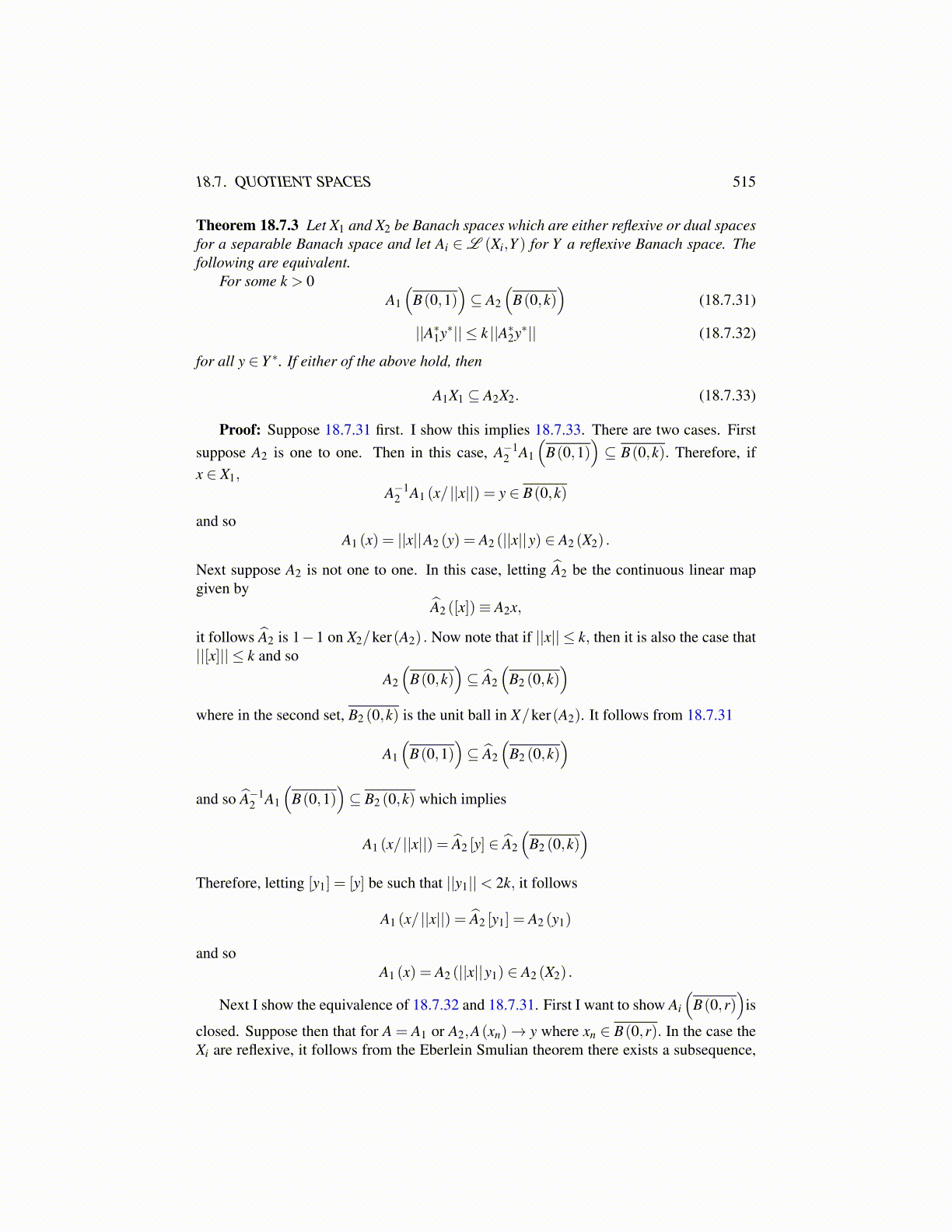
18.7. QUOTIENT SPACES 515
Theorem 18.7.3 Let X1 and X2 be Banach spaces which are either reflexive or dual spacesfor a separable Banach space and let Ai ∈L (Xi,Y ) for Y a reflexive Banach space. Thefollowing are equivalent.
For some k > 0A1
(B(0,1)
)⊆ A2
(B(0,k)
)(18.7.31)
||A∗1y∗|| ≤ k ||A∗2y∗|| (18.7.32)
for all y ∈ Y ∗. If either of the above hold, then
A1X1 ⊆ A2X2. (18.7.33)
Proof: Suppose 18.7.31 first. I show this implies 18.7.33. There are two cases. Firstsuppose A2 is one to one. Then in this case, A−1
2 A1
(B(0,1)
)⊆ B(0,k). Therefore, if
x ∈ X1,A−1
2 A1 (x/ ||x||) = y ∈ B(0,k)
and soA1 (x) = ||x||A2 (y) = A2 (||x||y) ∈ A2 (X2) .
Next suppose A2 is not one to one. In this case, letting Â2 be the continuous linear mapgiven by
Â2 ([x])≡ A2x,
it follows Â2 is 1−1 on X2/ker(A2) . Now note that if ||x|| ≤ k, then it is also the case that||[x]|| ≤ k and so
A2
(B(0,k)
)⊆ Â2
(B2 (0,k)
)where in the second set, B2 (0,k) is the unit ball in X/ker(A2). It follows from 18.7.31
A1
(B(0,1)
)⊆ Â2
(B2 (0,k)
)and so Â−1
2 A1
(B(0,1)
)⊆ B2 (0,k) which implies
A1 (x/ ||x||) = Â2 [y] ∈ Â2
(B2 (0,k)
)Therefore, letting [y1] = [y] be such that ||y1||< 2k, it follows
A1 (x/ ||x||) = Â2 [y1] = A2 (y1)
and soA1 (x) = A2 (||x||y1) ∈ A2 (X2) .
Next I show the equivalence of 18.7.32 and 18.7.31. First I want to show Ai
(B(0,r)
)is
closed. Suppose then that for A = A1 or A2,A(xn)→ y where xn ∈ B(0,r). In the case theXi are reflexive, it follows from the Eberlein Smulian theorem there exists a subsequence,